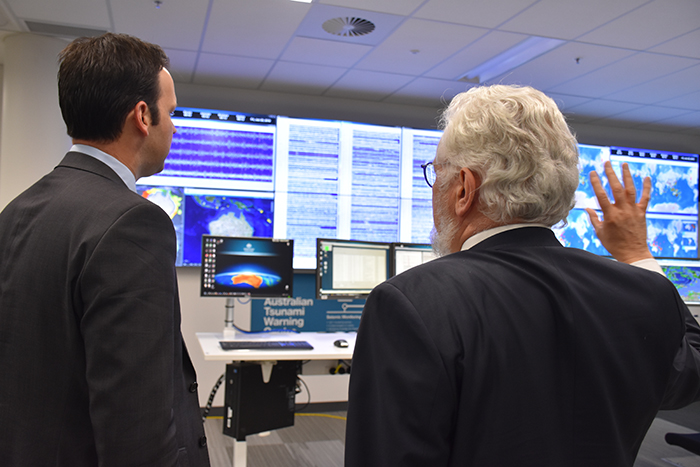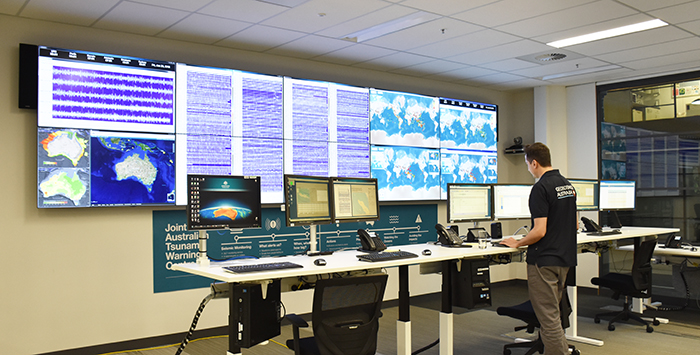National Earthquake Alerts Centre gets a shake-up
29 June 2018
The upgraded National Earthquake Alerts Centre at Geoscience Australia was officially reopened today by the Minister for Resources and Northern Australia, Matt Canavan.
Minister Canavan was given a tour of the facility by Geoscience Australia's Acting Chief Executive Officer Dr Andy Barnicoat.
Dr Barnicoat said the official opening was the end result of months of hard work, which not only included a refresh of the Centre's facilities but a number of other improvements.
"Although it looks fantastic, the improvements we've made to the Centre aren't just superficial. We recently became the first earthquake monitoring facility in the world to use commercial cloud computing as its primary infrastructure platform," Dr Barnicoat said.
 Senator the Hon Matthew Canavan touring the National Earthquake Alerts Centre with Dr Andy Barnicoat, acting CEO at Geoscience Australia
Senator the Hon Matthew Canavan touring the National Earthquake Alerts Centre with Dr Andy Barnicoat, acting CEO at Geoscience Australia
"Moving to the cloud gave us the opportunity to upgrade the Centre's detection, analysis and alerting system and modernise Geoscience Australia's earthquakes website earthquakes.ga.gov.au."
"Given that on average, we detect and locate 750 Australian earthquakes each year, it's not surprising the earthquakes website is one of Geoscience Australia's most visited."
"Using the cloud has improved the website's capacity and flexibility to handle the spikes in demand commonly experienced immediately after a significant earthquake in Australia."
Dr Barnicoat said it was now easier than ever before for users of mobile devices to view, search and report earthquakes in Australia.
"Although anyone who's experienced an earthquake has been able to submit a felt report online for about a decade, using the new interactive felt report feature, you will be able to see whether someone else in your area or elsewhere has also submitted a felt report."
 Geoscience Australia's National Earthquake Alerts Centre
Geoscience Australia's National Earthquake Alerts Centre
Since 2008, Geoscience Australia has published information on approximately 15,000 earthquakes from around the world. On average, this works out to be about 1,500 per year, of which 100 are Australian earthquakes of magnitude 3.0, or larger.
Dr Barnicoat said all the improvements to the Centre had been made with one goal in mind: building safer and more resilient communities.
"All the information collected by the Centre feeds into projects both at home and abroad that help communities to prepare for, respond to and recover from earthquakes. Saving lives, protecting valuable infrastructure and ultimately, reducing the impact of disasters on society."





